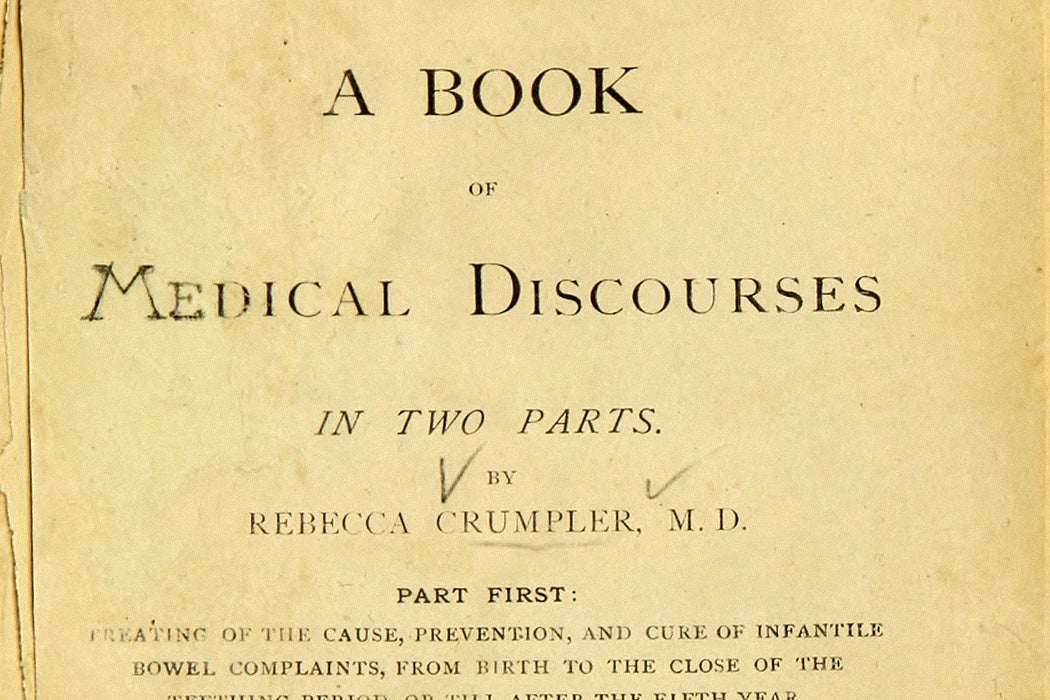On March 9, 125 years ago, Dr. Rebecca Lee Crumpler passed away at the age of sixty-four. As the first Black woman physician in the United States, she had served communities at times of enormous upheaval: the Civil War and the end of slavery. She had seen her work as a mission, and had endured the dual scourges of racism and sexism while caring for her patients.
Dr. Crumpler was born in 1831 as Rebecca Davis in Delaware. She was raised in Pennsylvania by an aunt “whose usefulness with the sick was continually sought,” she wrote in the introduction to her book (discussed below). In 1852, she began an eight-year nursing apprenticeship, as there were no nursing schools in the United States at the time. The doctors she worked with gave her recommendations to the New England Female Medical College, where Crumpler studied from 1860 to 1864, graduating as “Doctress.” At the time of her enrollment, there were 300 women physicians in the country, none of whom was Black. (While the the numbers of medical students and residents who are women is much more representative of the population today, disparities in race, ethnicity, and speciality areas remain.)
The next year, the Thirteenth Amendment was ratified, ending slavery throughout the country. The Bureau of Refugees, Freedmen, and Abandoned Lands, colloquially known as the Freedmen’s Bureau, was created to assist the 4 million people, formerly enslaved, who were now displaced, dispossessed, and denied access to the remaining social and economic structures of the United States. Dr. Crumpler moved to Richmond, Virginia, to serve as a physician with the bureau, allowing her the opportunity to “become acquainted with the diseases of women and children.”
When her tenure with the agency was completed, she seems to have lived in Boston for a time and in Delaware. Eventually, she returned to the Boston neighborhood of Hyde Park to private practice. From this came what might have been the first medical book written for women by a Black woman physician, A Book of Medical Discourses: In Two Parts,” published in 1883. The first part covered illnesses of children from infancy to five years, and those of “women and youth of both sexes” in the second. It was a sort of early Our Bodies, Ourselves for readers who might want to better care for themselves and their children.
Weekly Newsletter
Sadly, after her death, her place in the cemetery where she was buried remained unmarked and anonymous. But this July, a “Celebration of Life” will be held for Dr. Crumpler by the Friends of the Hyde Park Library. Funds have been raised for her headstone, and its installation is forthcoming.
Editor’s note: This post has been updated to more accurately reflect the chronology of Dr. Crumpler’s life between her time at the Freedman’s Bureau and her time in Hyde Park.







